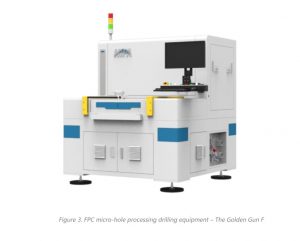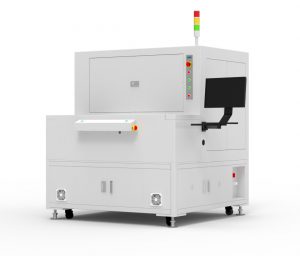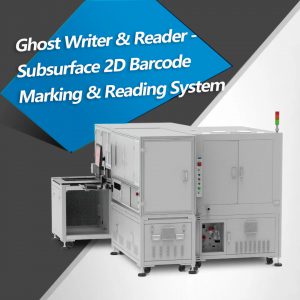Table of Contents
What is Laser Cladding?
Laser cladding is an additive manufacturing process of coating on different type of material surface. It is generally done to improve the surface properties, to protect the material against corrosion and oxidation. It involves a melt pool that is traversed across the base material surface and simultaneously either wire feedstock or powder is applied to create a thin layer of coating.
Laser induced cladding are special as the uniformly distributed coatings with high repeatability can be deposited and the coatings, which are free from porosity and cracking show good adhesion, low dilution, low surface roughness and no wastage of material is involved. The laser cladding process can be optimized with the help of adjusting the parameters such as laser beam power density, laser beam travel speed, and laser beam diameter at the work piece surface.
Single Step vs Two Step Process Laser Cladding
Laser cladding can be performed in a single or two steps. In a single step processing, the coating material is entered into the melt pool where it converts into molten form over the substrate surface. As soon as the moving laser beam leaves the space the molten coating material starts to solidify creating a fine coating by overlapping of many tracks of laser movement.
In two step process, the coating material is deposited over the substrate surface as a first step. In the second step a surface treatment from a moving laser beam is provided in which the coating material as well as a thin layer of substrate material starts to melt together. As soon as the laser beam leaves the space coating starts to solidify spontaneously.
Wire Cladding vs Powder Cladding
In laser cladding processing we have a choice of using filler material and based on different filler material we can classify laser cladding into Wire Cladding vs Powder Cladding processing. Both kinds of processes have their own advantages and limitations which are pointed out herewith.
Wire Cladding
- Efficient use of filler materials
- Number of options of wire materials
- Clean process
Powder Cladding
- Reproducibility and uniformity of results
- Variety of feeding is possible
- A variety of feeding material is possible
- Better option for 3D setup
In powder cladding, powder is transported from the rotating disc into the feed nozzle through the career gasses like Hilum or Argon by the application of absorption principle. The career gases then forces the powder particle out with high speed resulting into the ultimate cladding.
In Wire cladding process, the wire is feed from the spool to the off axes torch. Wire is heated below the melting temperature and cladding is performed through wire guiding system. Wire cladding process is advantageous due to 100% efficiency of materials use but due to radiation absorption issue in the wire, the output is not very consistent.
Other Laser Cladding Methods
There has been many other methods of cladding has been popular in the market. All these methods are based on either Arc Welding or Thermal Spraying process. The techniques such as gas tungsten arc welding (GTAW), plasma arc welding (PAW), and plasma transferred arc (PTA), gas metal arc welding (GMAW) and submerged arc welding (SAW) involves arc welding process.
In this kind of cladding at first the base material is melted using the arc in the presence of shield gas. Then in the molten region a cladding material (wired or powder) is introduced and in this way cladding layer is formed. The problem with these techniques is high heat input that causes mechanical distortion. High dilution is another issue that hinders the use of arc welds based cladding.
In thermal spraying based cladding process, the cladding material is melted through the electricity and then sprayed onto the base material. Although thermal spraying based cladding process is cost effective and allows cladding in wide variety of materials, the biggest problem is that the bonding between cladding and base material is mechanical and not metallurgical that diminishes the adhesion and wear resistance.
Benefits of Laser Cladding over Traditional Cladding
Lasers are special choice for any kind of materials processing and micromachining. They offer myriad of choices in the form of different laser parameters like laser power, wavelength, pulse repetition frequency, different kind of beam profile etc that can be utilized to optimize the overall processing.
By properly optimizing these parameters, the limitations of arc welding and thermal spraying processes have been well addressed by using different lasers. Using laser cladding heat distortion and dilution can be minimized. Good surface quality with low porosity level can be achieved. Coating prepared by laser cladding are more durable and of fine quality.
The overall costing is also reduced. That is the reason, laser based cladding has been getting more and more attention and it has been continuously replacing the traditional cladding process in different industries.
Advantages of using JPT Diode laser for Cladding process
JPT laser offers a diversified range of laser characteristics. Continuous High-powered lasers at JPT laser are special as they contain all the advantageous feature of arc welding and thermal spraying process. For example, lower heat related distortion, reduced dilution, extremely low porosity and better surface uniformity can be achieved using JPT diode lasers.
These lasers are available in near IR range at which most of the metallic surfaces are absorbing. Electricity to light conversion efficiency is always superior in semiconductor diode. The beam profile in rectangular shaped is always very helpful in large area cladding. Their compact size only helps in easy installations even in difficult places. In case of these diode lasers, there is no need to worry about post processing and therefore, they reduce the overall time and cost substantially.
These lasers form a metallurgical bond between the base material and cladding material thus forming better adhesion and wear resistance. No mechanical bonds means no cracking and de-lamination in coatings.
At JPT laser, a dedicated team of experts is always ready to hear the customer’s typical requirements and they always offer customized solution that suits to the particular applications.
Recommend Reading

HiPA Solutions – Laser Micro Hole Drilling
Flexible circuit boards, referred to as FPC are widely used in consumer electronic products such as microelectronics, 5G mobile phones, laptop computers, and new energy vehicles. Also as electronic interconnects to connect products.

HiPA Solutions – Laser Ink Removal
Ink is an important material for printing. By printing or inkjet, patterns and characters are displayed on the substrate. Among them, screen printing inks are widely used on the cover glass of various display panels such as mobile phones, computers, smart watches, cameras, etc.



